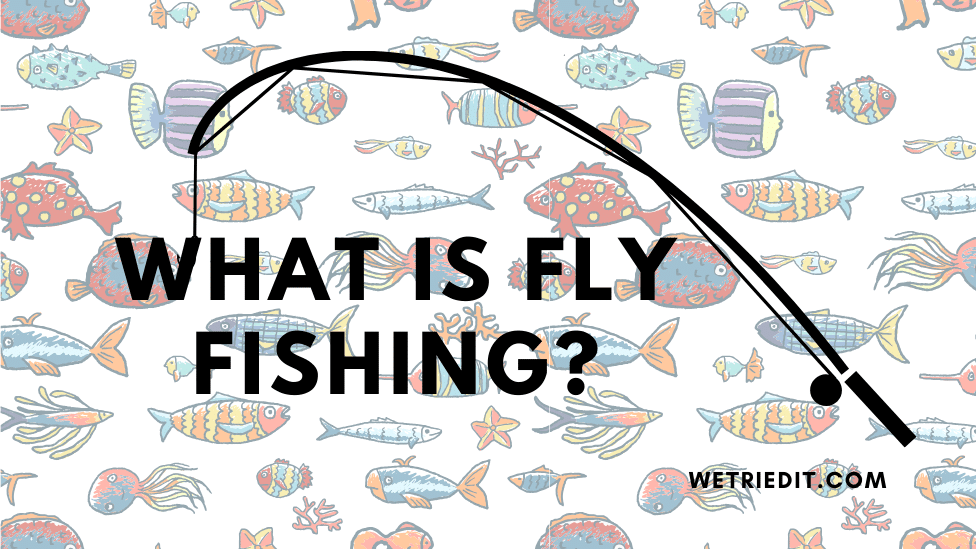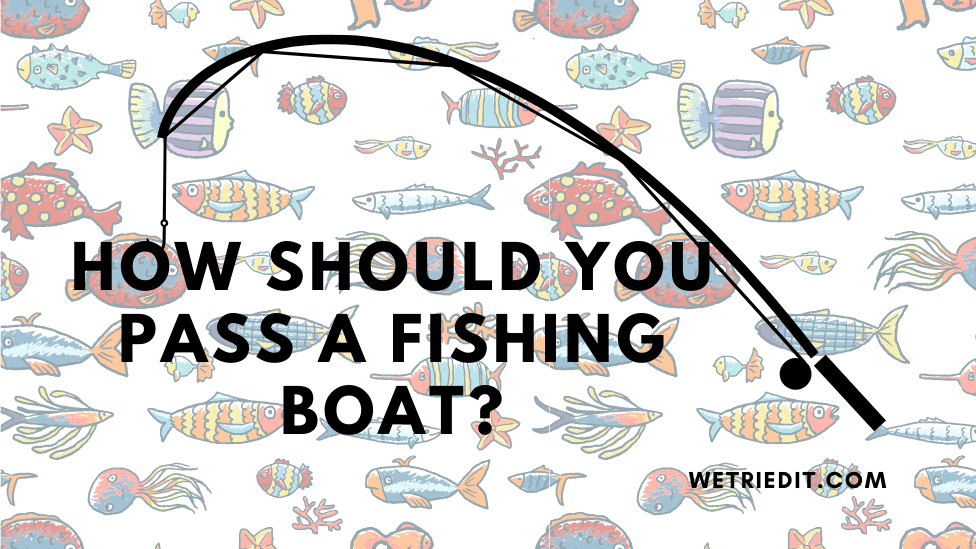Fly fishing is a popular outdoor activity that involves catching fish using artificial flies. It is a method of fishing that requires skill and patience, as well as knowledge of the behavior of different fish species and their habitats. Fly fishing is often associated with pristine rivers and streams, and is considered by many to be a relaxing and meditative way to spend time in nature.
The origins of fly fishing can be traced back to ancient times, when Macedonian fishermen used artificial flies made of red wool and feathers to catch fish. Over time, the sport evolved and became more sophisticated, with new techniques and equipment being developed to improve the chances of success. Today, fly fishing is enjoyed by people of all ages and backgrounds, and is practiced in a variety of settings, from small streams to large lakes and even the open ocean.
What is Fly Fishing?
Fly fishing is a type of fishing that uses an artificial fly as bait. The goal of fly fishing is to catch fish by presenting the fly in a way that mimics the natural movement of insects or other prey. The fly is cast using a specialized fly rod, reel, and line.
Unlike traditional spin fishing, which uses lures or bait to attract fish, fly fishing relies on the weight of the fly line to cast the fly. The fly line is heavier than the fly itself, so when the angler casts the line, the weight of the line carries the fly to the desired location.
Fly fishing can be done in a variety of settings, including rivers, streams, lakes, and even saltwater. It is often associated with trout fishing, but fly fishing can be used to catch a wide variety of fish species.
Fly fishing requires a certain level of skill and technique. Anglers must learn how to cast the fly accurately and with the proper amount of force. They must also learn how to read the water and understand the behavior of the fish they are targeting.
Overall, fly fishing is a challenging and rewarding sport that requires patience, practice, and a love of the outdoors.
History of Fly Fishing
Fly fishing has been around for centuries, with evidence of the practice dating back to ancient Rome and Greece. However, the modern form of fly fishing that we know today can be traced back to 15th century England.
At the time, fly fishing was primarily used for catching trout and grayling in rivers and streams. The earliest known fly fishing book, “The Treatyse on Fysshynge with an Angle,” was written by Dame Juliana Berners in 1496 and provided detailed instructions on how to tie flies and fish with them.
In the 19th century, fly fishing gained popularity in America, particularly in the eastern states. Anglers began using lighter and more flexible rods, which allowed them to cast further and with greater accuracy. The development of new materials, such as silk lines and gut leaders, also contributed to the growth of the sport.
Fly fishing continued to evolve throughout the 20th century, with the introduction of new techniques and equipment. Today, fly fishing is practiced all over the world and is enjoyed by anglers of all ages and skill levels.
Overall, the history of fly fishing is a rich and fascinating one, with many notable figures and innovations contributing to its development over the centuries.
Equipment Used in Fly Fishing
Fishing Rods
Fly fishing rods are typically longer and lighter than traditional fishing rods. They are designed to cast the lightweight fly line and artificial fly with precision and accuracy. Fly rods are made of a variety of materials, including bamboo, graphite, and fiberglass. The length of the rod depends on the type of fishing and the size of the water. Longer rods are better suited for larger bodies of water, while shorter rods are better for smaller streams.
Fishing Reels
Fly fishing reels are designed to hold the fly line and provide drag when fighting a fish. They come in a variety of sizes and materials, including aluminum, graphite, and plastic. The size of the reel depends on the size of the rod and the type of fish being targeted. Larger fish require larger reels with more drag.
Fishing Lines
Fly fishing lines are typically made of a PVC or polyurethane coating over a braided core. They come in a variety of weights, from 1 to 15, with lighter lines used for smaller fish and heavier lines used for larger fish. The weight of the line is matched to the weight of the rod to ensure proper casting and presentation of the fly.
Artificial Flies
Artificial flies are designed to mimic the insects and other prey that fish feed on. They come in a variety of sizes, shapes, and colors, and are made from natural and synthetic materials. Flies are typically tied onto a hook with thread and can be dry, wet, or nymph patterns. The choice of fly depends on the type of fish being targeted and the conditions of the water.
In summary, fly fishing requires specialized equipment designed to cast the lightweight fly line and artificial fly with precision and accuracy. The fishing rod, reel, line, and artificial fly are all important components of the equipment used in fly fishing.
Techniques of Fly Fishing
Casting
Casting is a crucial technique in fly fishing that involves throwing the line and fly into the water. There are several casting techniques, including overhead cast, roll cast, and side-arm cast. The overhead cast is the most common and involves raising the rod tip high and then bringing it forward to cast the line. The roll cast is used when there is limited space behind the angler, and it involves rolling the line on the water surface before casting. The side-arm cast is used when casting under trees or other obstacles.
Casting requires a lot of practice and patience to master. It is essential to learn how to cast accurately and efficiently to catch fish successfully. Anglers should also be mindful of their surroundings to avoid hitting trees, rocks, or other objects.
Retrieving
Retrieving is another essential technique in fly fishing that involves moving the fly through the water to attract fish. There are several types of retrieves, including slow retrieve, fast retrieve, and stop-and-go retrieve. The slow retrieve is used when fish are inactive, and it involves moving the fly slowly through the water. The fast retrieve is used when fish are active, and it involves moving the fly quickly through the water. The stop-and-go retrieve is used when fish are following the fly, and it involves stopping the fly and then moving it again to entice the fish to strike.
Retrieving requires anglers to have a good understanding of the fish’s behavior and feeding patterns. It is essential to vary the retrieve to match the fish’s activity level and the conditions of the water.
Overall, mastering casting and retrieving techniques is essential for successful fly fishing. With practice and patience, anglers can become proficient in these techniques and increase their chances of catching fish.
Types of Fly Fishing
Freshwater Fly Fishing
Freshwater fly fishing is a popular type of fly fishing that involves casting a fly line and fly rod in freshwater streams, rivers, and lakes. This type of fly fishing is typically done for trout, but can also be done for other freshwater species such as bass, panfish, and carp.
There are several techniques used in freshwater fly fishing, including dry fly fishing, nymph fishing, and streamer fishing. Dry fly fishing involves casting a fly that floats on the surface of the water, imitating an insect that has landed on the water. Nymph fishing involves casting a fly that imitates an underwater insect or larva, while streamer fishing involves casting a fly that imitates a small fish or other prey.
Saltwater Fly Fishing
Saltwater fly fishing is a type of fly fishing that involves casting a fly line and fly rod in saltwater environments such as oceans, bays, and flats. This type of fly fishing is typically done for species such as bonefish, tarpon, and permit.
Saltwater fly fishing requires different equipment and techniques than freshwater fly fishing. The flies used in saltwater fly fishing are typically larger and heavier than those used in freshwater fly fishing, and the rods and reels are designed to handle larger fish and stronger currents.
In saltwater fly fishing, anglers use a variety of techniques including sight fishing, blind casting, and stripping. Sight fishing involves spotting a fish in the water and casting a fly to it, while blind casting involves casting a fly in an area where fish are likely to be present. Stripping involves retrieving the fly in short, quick strips to imitate a fleeing baitfish.
Overall, both freshwater and saltwater fly fishing offer unique challenges and rewards for anglers of all skill levels.
Benefits of Fly Fishing
Fly fishing is an excellent outdoor activity that offers several benefits to the individual. Here are some of the advantages of fly fishing:
Physical Exercise
Fly fishing is an excellent form of physical exercise, as it requires the angler to wade through water, cast the line, and reel in fish. These actions engage the muscles in the arms, shoulders, back, and legs, providing a full-body workout. Additionally, the cardiovascular system benefits from the increased heart rate and oxygen intake during the activity.
Stress Relief
Fly fishing is a great way to reduce stress and anxiety. Being in nature, surrounded by the sound of flowing water and the beauty of the surroundings, can help individuals relax and unwind. The focus required to cast the line and catch fish can also help to clear the mind and reduce stress.
Connection with Nature
Fly fishing provides an opportunity to connect with nature and appreciate its beauty. Being in the outdoors, surrounded by wildlife and natural scenery, can help individuals gain a greater appreciation for the environment and the importance of conservation efforts.
Social Interaction
Fly fishing can be a social activity, providing an opportunity to connect with others who share the same interests. It can also be a great way to bond with family members or friends, creating memories that will last a lifetime.
Mental Stimulation
Fly fishing requires mental stimulation, as the angler must constantly assess the water, the fish, and the conditions to determine the best approach. This mental challenge can help to improve cognitive function and keep the mind sharp.
Overall, fly fishing offers several benefits to the individual, including physical exercise, stress relief, connection with nature, social interaction, and mental stimulation.
Challenges in Fly Fishing
Fly fishing is a challenging and rewarding sport that requires a great deal of skill, patience, and dedication. While it can be a relaxing and enjoyable pastime, there are also many challenges that fly fishermen and women must face.
One of the biggest challenges in fly fishing is finding the right location. Fish are often found in specific areas, and it can take a lot of time and effort to find them. Additionally, weather conditions can greatly affect fishing, and it can be difficult to predict when the fish will be biting.
Another challenge is selecting the right fly and technique. There are many different types of flies, each designed to mimic a specific type of insect or baitfish. Choosing the right one can be tricky, and it often takes a lot of trial and error to find the perfect match. Additionally, the technique used to cast the fly can greatly affect the success of the fishing trip.
Fly fishing also requires a great deal of physical skill. Casting a fly rod can be tiring, especially when casting for extended periods of time. Additionally, wading in water can be dangerous and requires balance and coordination.
Finally, fly fishing can be an expensive hobby. High-quality gear can be costly, and it can take a lot of time and money to travel to the best fishing locations.
Overall, while there are many challenges in fly fishing, the rewards of a successful trip can make it all worthwhile.
Conservation and Ethics
Fly fishing is not only a recreational activity but also a way to connect with nature and, therefore, it is essential to understand the importance of conservation and ethics. Anglers have a responsibility to preserve the resources they use, and they must do so in a way that ensures the sustainability of the environment.
Conservation in fly fishing involves protecting the natural habitats of fish species, which are often threatened by pollution, climate change, and habitat destruction. Anglers must take care not to damage the ecosystem by following guidelines such as catch-and-release fishing, using barbless hooks, and avoiding fishing during spawning seasons.
Ethics in fly fishing involves respecting the fish and the environment. Anglers must treat fish humanely and avoid causing unnecessary harm or stress. They must also respect other anglers and avoid overcrowding or overfishing in a particular area.
Fly fishing organizations and clubs often have codes of conduct that promote conservation and ethics. These codes of conduct encourage anglers to be mindful of their impact on the environment and to take steps to minimize it. By following these guidelines, anglers can help to ensure that future generations can enjoy the sport of fly fishing in a sustainable and responsible way.
Conclusion
In conclusion, fly fishing is a popular and enjoyable sport that involves catching fish using artificial flies. It requires skill, patience, and knowledge of the water and the fish you are trying to catch.
Fly fishing can be done in various bodies of water, including rivers, streams, and lakes. It can be done in both freshwater and saltwater environments, and it can be practiced in many different countries around the world.
Fly fishing is not only a sport but also a way to connect with nature and appreciate the beauty of the outdoors. It can be a solitary activity or a social one, and it can be enjoyed by people of all ages and skill levels.
To get started with fly fishing, it is important to have the right equipment, including a fly rod, reel, line, and flies. It is also essential to have a basic understanding of the different types of flies and how to cast them effectively.
Overall, fly fishing is a rewarding and fulfilling activity that can provide a sense of accomplishment and relaxation. With practice and dedication, anyone can become a skilled fly fisherman or woman and enjoy the many benefits that this sport has to offer.







